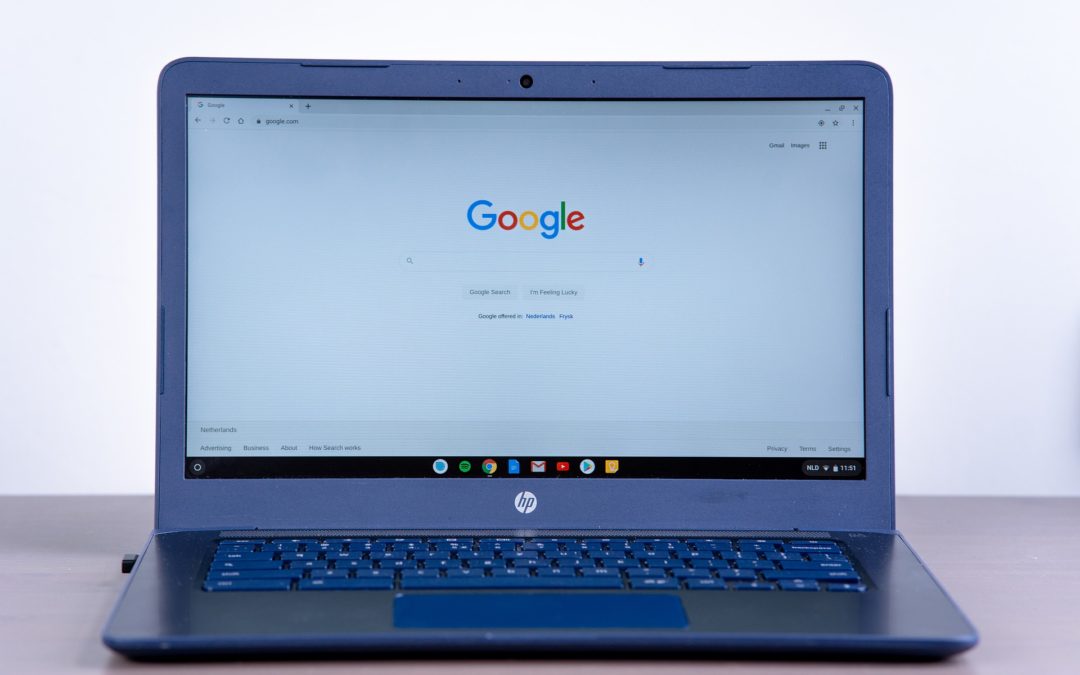Chromebooks are a popular choice for businesses and schools alike. In 2020, Chromebook popularity surged in the education industry as remote and hybrid learning dominated. But what is a Chromebook? What makes it different from a laptop or notebook? Today, we’ll answer those questions.
Note: We updated this blog in March 2021 and have moved Pros and Cons of a Chromebook.
What is a Chromebook?
First introduced in June 2011, a Chromebook is a type of laptop that uses the Linux-based Chrome OS as its operating system. Chromebooks are specifically designed to use the Google Chrome browser and most activities occur online. This includes word processing, creating spreadsheets and slideshows, notetaking, etc. These docs are automatically saved to cloud storage via Google Drive. Chromebooks have limited internal storage and rely on cloud-based storage for most applications and data.
Chromebook Versus Traditional Laptops
Although a Chromebook is a type of laptop, chances are it’s not the first thing you think of when you hear the word laptop. Chromebooks are lightweight, efficient, and low maintenance. How do they compare to traditional laptops like a Windows laptop or MacBook?
Here are the key differences:
Operating System
The operating system is one of the biggest differences between a Chromebook traditional laptop Chromebooks run ChromeOS, while Windows laptops run Windows OS and MacBooks use macOS.
The functionality of these systems is starkly different. Chrome OS relies heavily on the internet, with most applications hosted online. Other operating systems host various software and applications online and offline.
Due to its reliance on the internet, working offline is more limited. It’s still possible but requires planning and enabling offline settings.
Light in Hardware & Software
One of these reasons why Chromebooks are so lightweight is because they use less components and parts in their construction. Additionally, they have no actual software. Everything happens in Google Chrome through online applications.
This is very different from a Windows laptop or MacBook. One of the biggest benefits of this difference though is the maintenance. Because there are fewer moving parts, there’s less a chance that something will need repaired. The lack of software means no need to worry about installation or updates.
Storage
Although both Microsoft (OneDrive) and Apple (iCloud) have implemented cloud-based storage, Chromebooks thrive under a cloud storage system (Google Drive). Unlike their counterparts, Chromebooks have limited local storage, meaning you can’t save a surplus of files locally, i.e., to your actual device. This makes Chromebooks efficient and easy to share. Users only need to sign into their Google Account for a personal computing experience.
Less Vulnerable to Viruses
Since most work is cloud based and there is no actual software, Chromebooks are less prone to viruses. Similar to macOS, but unlike Windows OS, Chrome OS comes with built-in virus protection and receives regular security patches via Google auto updates. Due to this integrated protection and updates, some could argue this makes Chromebooks far more secure than a Windows laptop.
Google Workspace
Another key difference—Microsoft Office Versus Google Workspace. Whether you own a Windows laptop or MacBook, chances are you use Microsoft 365 as your office suite. Chromebooks offer the analogue to this in Google Workspace. It hosts equivalent apps to each Microsoft app.
While Google Workspace’s apps are considered equivalent, there is still a learning curve especially if you’re a lifelong Windows 365 user. This could be the most limiting factor for Chromebooks; however, online versions of Microsoft 365 are available for free.
Auto Update Expiration
This is a feature unique to Chromebooks—auto update expiration (AUE). Formerly EOL, AUE is the date when Google will stop providing automatic updates and security patches to your device. This doesn’t mean that your Chromebook stops working. It only means that Google will no longer support the device. Generally, this date is anywhere from six to eight-and-a-half years from the manufacture date. Additionally, Google has been known to extend AUEs.
Price Tag & Lifetime Cost
Possibly the most attractive feature about the Chromebook: low price tag and low cost of ownership. While you most certainly can find a Chromebook that carries a lofty price tag, this is not the norm. You can easily purchase a device for less than $300. Beyond that, due to less hardware and no software, these are extremely easy devices to maintain which translates to low cost of ownership.
AGParts Education supports 6,000+ innovative 1:1 school districts in Chromebook parts supply and technology buyback. Contact us today to see how we can help your school.


Recent Comments